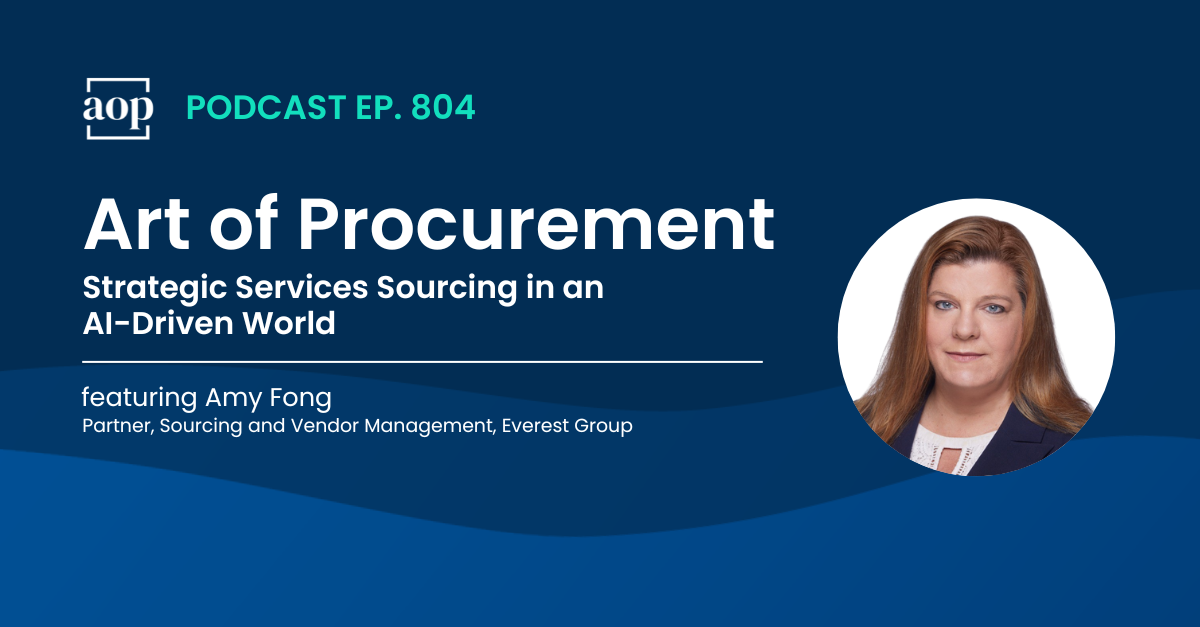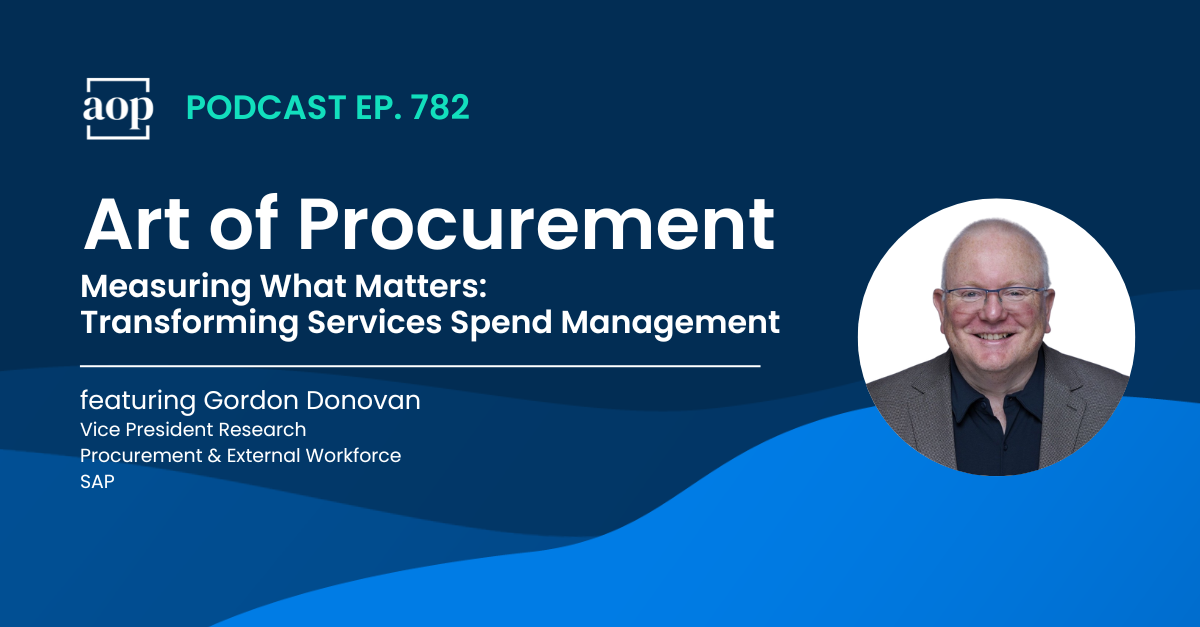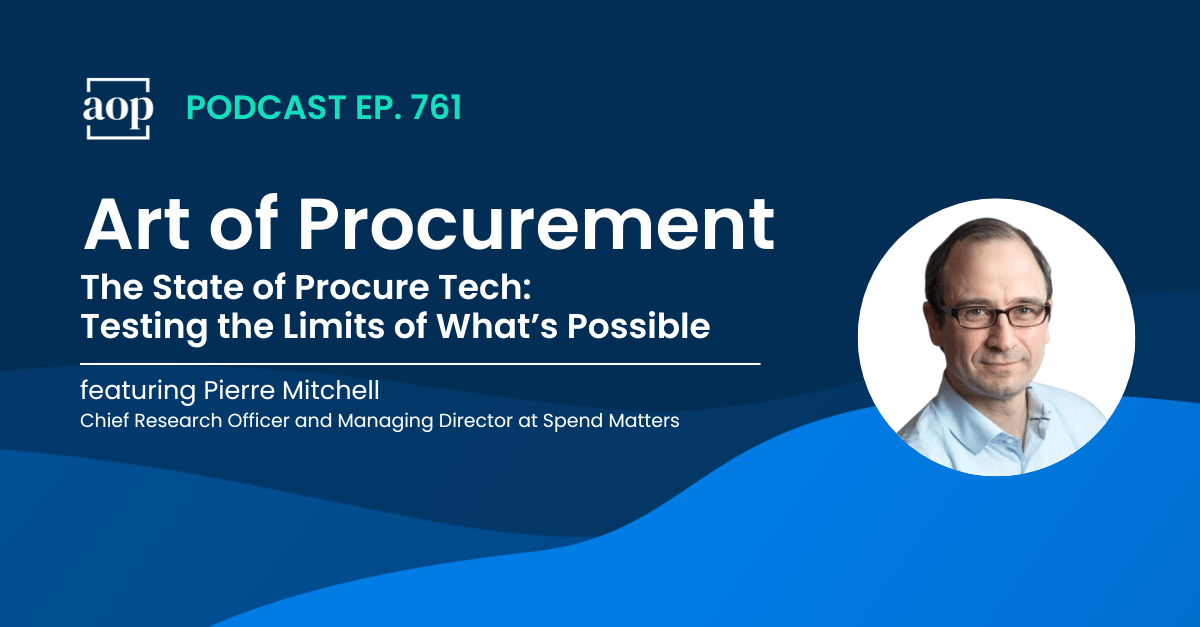
“I’m a big believer in market intelligence, where we educate the business on the providers and the levers to pull. It's not about just pricing; it's understanding the market.”
- Amy Fong, Partner, Sourcing and Vendor Management, Everest Group
Strategic sourcing for business services is, like all other areas of procurement, experiencing unprecedented change.
From generative AI transforming delivery models to evolving workforce strategies that blend internal and external capabilities, procurement leaders must navigate a complex and rapidly changing environment while still delivering measurable value that matters to the business.
Amy Fong, Partner, Sourcing and Vendor Management at Everest Group, recently joined me to share the insights she has uncovered while analyzing thousands of real contracts and observing how leading companies are adapting to new expectations and new technologies like generative AI.
Here, in Amy's own words, are some stand-out moments from our conversation:
The Challenge of Outcome-Based Contracts
"When I've looked at contract negotiations, again, we're looking at thousands of contracts, we see 95 percent of RFPs say, 'Make this outcome-based or include some outcome-based metrics.' In the end, it's something like four to five percent that end up with it. Everybody agrees that outcome-based contracts are something we want, but it's really hard to implement.”
How AI is Revolutionizing Business Services
"I think the most exciting thing that we're talking about right now is the impact generative AI has on the delivery of business services across the enterprise. When you look at how you're going to work with service providers, contract with them, manage your vendors, how you're going to structure a contract now for something that's a five-year agreement when you know the world is going to change - there's so much to think about there. We're calling that shift 'systems of action.' We're moving from systems of records into systems of action, and we think it's going to be the biggest shift since labor arbitrage."
The Reality of AI Adoption
"The cost is up and not down for the providers because they're still investing in AI. There are so many pilots, and they're not reaping the benefits yet. We're starting to get to that, but it's early.
“Our data showed that at least 75 percent of AI pilots did not go into production. So that's a lot of energy wasted - not wasted, you still learn from it. But it's a lot of trial and error."
Changing Performance Metrics
"Last week at one of our events in London, we had a roundtable that was supposed to be about tech and vendor management, but what everybody was really focused on was: as this changes, how does my VMO need to change? What are my performance metrics for these vendors? Because if they are using 50 percent AI agents instead of people, half my metrics are gone. What do my new KPIs look like? It's a massive change in thinking, a massive change in the way that we source, select, manage vendors, negotiate - all of that.”
The Evolution of Global Workforce Strategies
"A big theme that I picked up from our Engage event last fall was this whole topic of offshoring and outsourcing... The companies that are leaders in this, they're doing both. They're looking at a workforce strategy, and they're looking at having a hybrid model where they can shift really quickly between internal and external, maybe based on project."
It's a more agile way of thinking versus 'I'm going to put finance and accounting outsourcing out in Hyderabad and it's going to be there for five years.' Nothing lasts five years. So you need to have a model where you can shift back and forth on the fly."
Build-Operate-Transfer Models
"Build-operate-transfer (BOT) means basically we want to have our own center in another country, or maybe it's in the US, or maybe it's nearshored in Canada. And we're going to partner with a provider to actually start it up, build it, hire the talent, and build all the infrastructure. And then they'll transfer it back to us in time.
“I've heard from providers that they've just done 25 BOTs and only three of them have gone back in-house. It's actually a lot more expensive to do a build-operate-transfer contract or project than to just outsource it."
Procurement's Seat at the Decision-Making Table
"If you want to earn your spot, you need to have category managers who are well-versed, who can have the conversation and bring new information. These are billion-dollar decisions that someone at a very senior level is making, and you want to be the one helping them make them. You want to have your assumptions challenged."


.png)

